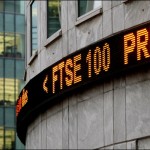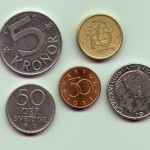The Russian ruble advanced to the strongest level in more than a month against the US dollar, as tension between Russia and the West started to deescalate after US Secretary of State John Kerry and Russian foreign minister Sergei Lavrov held talks on Friday.
USD/RUB touched a session low at 35.148 at 14:23 GMT, after which consolidation followed at 35.174, losing 1.7% on a daily basis. Support was likely to be received at February 17th low, 35.016, while resistance was to be met at March 28th high, 36.020.
Demand for the Russian ruble continued to be underpinned after US Secretary of State John Kerry and his Russian counterpart Sergei Lavrov held talks for four hours in Paris on Friday, seeking common diplomatic ground for an exit from the crisis that will best meet the Ukrainian people’s interests. Moscow’s military maneuvers posted some threats, with Kerry saying that the diplomatic progress depended on Russia pulling back its 40 000 troops it has deployed near its western border to Ukraine.
“Ukraine has also continued to ease in the near-term after Kerry and Russian foreign minister met,” said Lee Hardman, a foreign-exchange strategist at Bank of Tokyo-Mitsubishi UFJ Ltd. in London, cited by Bloomberg.
On Wednesday, the US and the EU agreed to work on preparing possible tougher economic sanctions against Russia, including its energy sector, and also reduce Europe’s dependence on Russian energy exports. President Obama warned after a meeting with European leaders that Moscow’s isolation will deepen, if it continues its current course.
Obama said on Thursday in Rome that the US and its allies are closely studying Russia’s military, energy and finance sectors to determine which sanctions could have the most powerful impact, if a new round of penalties should be imposed. The US Senate and House of Representatives passed bills imposing additional sanctions on Russian officials with allegedly close ties to President Vladimir Putin.
Meanwhile, greenback’s demand was pressured after the monthly business activity survey for the area of Chicago showed that the corresponding PMI slowed down to a reading of 55.9 this month from 59.8 in February, while analysts’ predicted a smaller decline to 58.5.
On Friday, Thomson Reuters in cooperation with the University of Michigan reported the final reading of their index, a gauge of US consumer confidence, which came in at 80.0, below analysts’ expectations of an increase to 80.5, but slightly up from a preliminary reading of 79.9.
Elsewhere, USD/CAD touched a session low at 1.1003 at 13:30 GMT, after which consolidation followed at 1.1018, losing 0.38% for the day. Support was likely to be found at March 28th low, 1.1001, also the pair’s weakest since March 7, while resistance was to be encountered at March 28th high, 1.1078.





